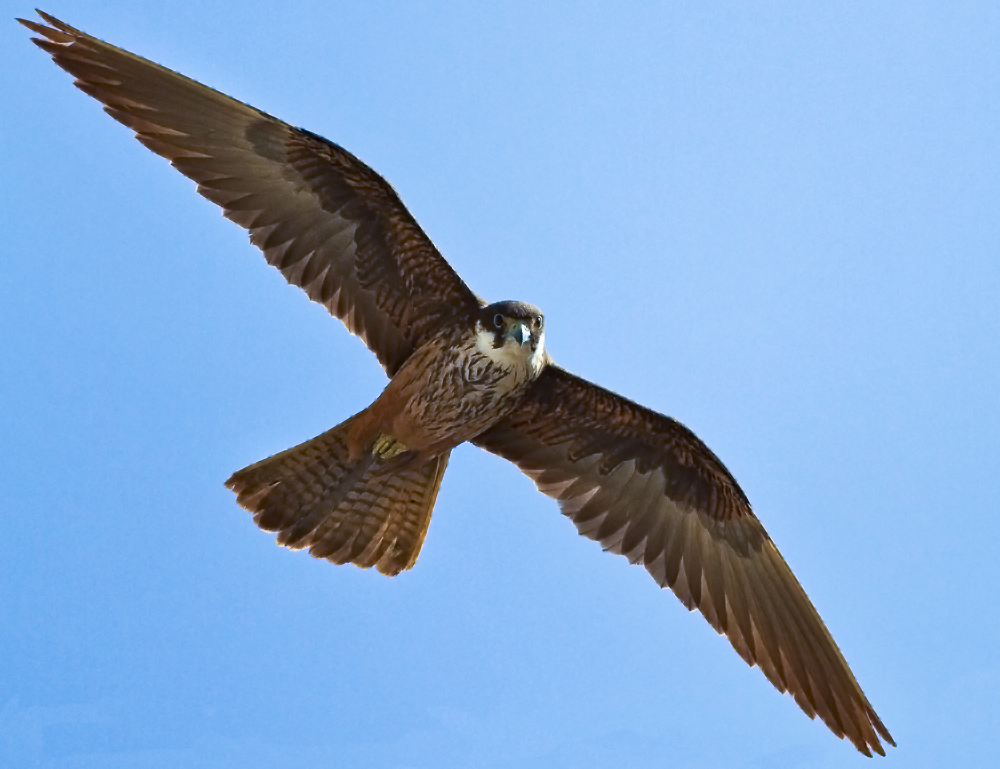Eleonora’s Falcon (Falco eleonorae)
Measurements: 0.36-0.42cm long; wingspan 0.9-1.1m
Id: Medium-sized falcon with noticeably long tail and long, pointed wings; very agile in the air; often hovers. Comes in several colour phases: dark morph is chocolate brown all over; pale morph is Hobby-like, with white cheek, but underparts washed reddish-brown.
The Eleonora’s Falcon has, to say the least, a highly individual lifestyle. Much is unique or unusual about it. It is the only species from Europe, for example, that finds its way to the distant Indian Ocean island of Madagascar for the winter. Birds migrating there leave their breeding grounds in October and travel east along the Mediterranean, across Suez and down the Red Sea, before following the East African coast to their destination.

By Jürgen Dietrich – from author, CC BY 3.0 de, https://commons.wikimedia.org/w/index.php?curid=17283122
Another exceptional feature of the Eleonora’s Falcons biology is its very late breeding season. It does not normally lay eggs until mid-July and August, months after most other species have finished. The reason, though, is simple. Pairs rear their young almost entirely on migrating song-birds, which are beginning to move south in large numbers by the time the eggs hatch in mid-August or September. Eleonora’s Falcons breed in colonies, in places where small birds are easy to see as they travel, such as coastal cliffs and offshore islands. Here the members can intercept small birds flying over the sea. Working together, groups of falcons may form a barrier several kilometres long and 1000m high, with birds posted at regular intervals, hovering, like border guards, ready to strike at any birds that try to get through. The predators hunt in the early morning and late evening when most migrant birds are travelling, and also sometimes by moonlight.
Eleonora’s Falcon colonies are only found in a narrow band of latitude, 6° from north to south, and only within the Mediterranean and on a few Atlantic Islands. The bird is not only special, but also a great rarity. Only about 100 colonies are known in the world, with a maximum of 300 pairs each; that adds up to only about 5000 pairs overall.
From ‘Birds: A Complete Guide to All British and European Species’, by Dominic Couzens. Published by Collins and reproduced with permission.
